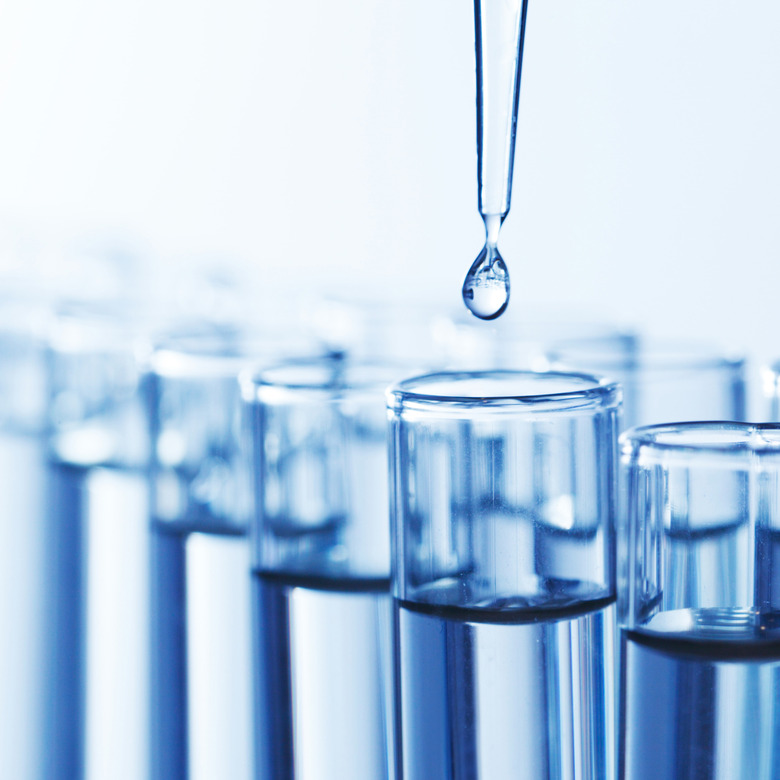How To Convert Vapor Pressure To Concentration
Even though it looks calm, a liquid sitting in a sealed container is still very active. When there is air above the liquid, some molecules of the liquid evaporate to become gas — vapor — while others condense to become liquid again. Eventually, these two movements are balanced and the liquid and gas are in equilibrium. At this point, the gas above the liquid has a pressure which also happens to be equivalent to the concentration of the gas. To convert the vapor pressure to concentration, use the ideal gas law which takes into account both the pressure and the temperature.
Step 1
Write out the formula for the ideal gas law — PV = nRT — where P is the pressure, V is the volume, n is the number of moles, T is the temperature in degrees Kelvin and R is the universal gas constant. Moles is a measure of the amount of a substance. The universal gas constant is 0.0821 atm * liter/mole * K.
Step 2
Rearrange the formula to solve for concentration in moles per volume. PV = nRT becomes n / V = P / RT, or pressure divided by the product of the universal gas constant and temperature.
Step 3
Convert the temperature into degrees Kelvin. Degrees Kelvin is equal to degrees Celsius plus 273.15. For example, 25 degrees Celsius equals 298 degrees Kelvin.
Step 4
Convert pressure to atmospheres — atm. For example, multiply the pressure in torrs by 0.001316 to find the pressure in atmospheres.
Step 5
Use the rearranged ideal gas law to determine the concentration. For example, with a temperature of 298 K and a pressure of 0.031 atm, the formula is 0.031 atm / (0.0821 atm * liter/mole * K) * (298 K). This is equal to 0.0013 mol/L, or moles per liter.
TL;DR (Too Long; Didn't Read)
Work in stages and pay attention to the units of the measurements. When dealing with a mixture of gases above a liquid, the concentration of the gas is equal to the partial pressure of that gas.
References
- University of Illinois at Urbana-Champaign; Derivation of Thermodynamic Equations; A. R. Crofts
- "Science of Everyday Things: Real Life Physics"; Neil Schlager; 2001
- Schaum's Outline of College Chemistry, Ninth Edition (Schaum's Outlines); Jerome Rosenberg, et al; 2009
- OnlineConversion.com; Convert Just About Anything to Anything Else; Robert Fogt
Cite This Article
MLA
Radcliffe, Shawn. "How To Convert Vapor Pressure To Concentration" sciencing.com, https://www.sciencing.com/convert-vapor-pressure-concentration-8677434/. 13 March 2018.
APA
Radcliffe, Shawn. (2018, March 13). How To Convert Vapor Pressure To Concentration. sciencing.com. Retrieved from https://www.sciencing.com/convert-vapor-pressure-concentration-8677434/
Chicago
Radcliffe, Shawn. How To Convert Vapor Pressure To Concentration last modified March 24, 2022. https://www.sciencing.com/convert-vapor-pressure-concentration-8677434/
